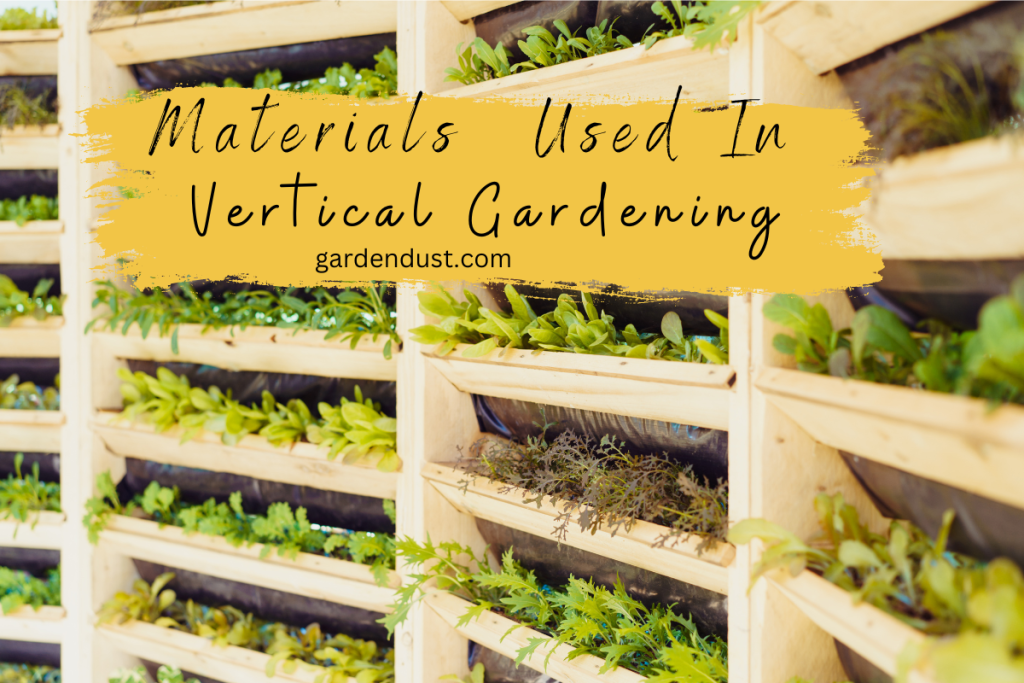Vertical gardens can be created using a variety of techniques. One common approach involves the use of modular panels or frames attached to the wall, which can be filled with a growing medium and planted with a selection of plants. Another method involves using specialized containers or pockets that are mounted vertically and filled with plants.
Various materials can be used in vertical gardening, depending on the specific design, purpose, and available resources. Here are some common materials used in vertical gardening:
- Modular Systems: Many vertical gardens utilize modular systems, which are pre-designed panels or frames that can be attached to walls or freestanding structures. These systems are often made of durable materials such as plastic, metal, or recycled materials. They have built-in pockets or containers that hold the plants and growing medium.
- Plant Pockets: Plant pockets are individual pockets or pouches made from fabric or synthetic materials that can be mounted vertically. They are often arranged in rows or columns to create a vertical garden. Plant pockets allow for flexibility in plant placement and can be easily attached to walls or fences.
- Trellises and Grids: Trellises and grids are vertical structures made of materials such as wood, metal, or plastic. They provide support for climbing plants and can be used to create vertical gardens with vining or trailing plant species. Trellises and grids are especially useful for growing vegetables like tomatoes, cucumbers, or beans.
- Hanging Pots and Baskets: Hanging pots and baskets are commonly used in vertical gardening, particularly in situations where wall-mounted systems are not feasible. These containers can be made of various materials, including terracotta, plastic, or woven materials. They can be suspended from hooks, brackets, or wires, creating a vertical display of plants.
- Living Wall Panels: Living wall panels are specialized systems designed specifically for creating green walls. These panels consist of a framework or structure made of materials like metal or plastic, with pockets or trays that hold plants and growing medium. Living wall panels often incorporate irrigation systems to facilitate watering and nutrient distribution.
- Recycled or Repurposed Materials: Vertical gardens can be constructed using recycled or repurposed materials, such as wooden pallets, old gutters, or PVC pipes. These materials can be transformed into vertical planters by arranging them in a vertical position and filling them with soil or a growing medium.
- Growing Medium: The choice of growing medium is crucial in vertical gardening. It should be lightweight, well-draining, and capable of retaining moisture and nutrients. Common growing mediums used in vertical gardens include lightweight potting mixes, coconut coir, sphagnum moss, or specialized soilless mixes.
It’s important to consider factors such as durability, weight, water retention, and aesthetics when selecting materials for your vertical garden. Additionally, ensure that the materials used are safe for plants and the environment. Happy Gardening…







